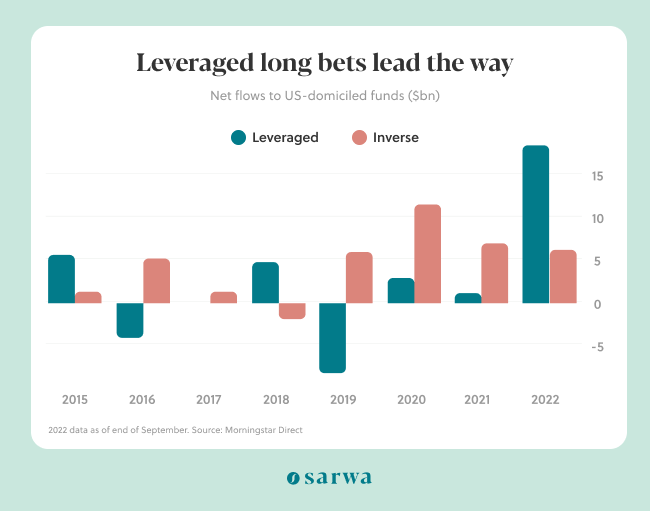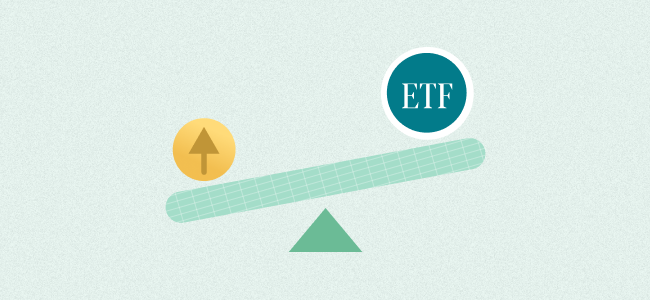In what has been a fairly volatile and tumultuous year, we’d first like to give a well-deserved shoutout to all the investors who have maintained their composure and discipline in light of the tough market environment. We understand the emotional rollercoaster that might come with this, and aim to stay alongside you throughout your investment journey.
Since day one, we have preached about the benefits of investing in ETFs and doing so in a passive and diversified manner. Your typical Exchange Traded Fund would give you exposure to either a geographic market, asset class, sector, industry or theme, allowing you to invest in that basket without going through the exercise of picking which companies/elements you’d want to go for. ETFs enable you to effectively diversify your funds at a relatively low price. That fund would go on to track the performance of that underlying, while ensuring that you are paying extremely low fees, and having a high degree of liquidity in case a withdrawal were to occur.
An ETF-based portfolio would allow you to benefit from long-term market trends, without falling victim to the shorter-term spikes/droughts that are witnessed, and their “somewhat eventual” human-natured emotional reactions. Looking back over 100 years of data, it is very much apparent that our reactions to such movements have had a negative impact on performance more often than not, destroying value and diminishing returns in the process. Interestingly enough: The larger the movements, the greater the reaction.
Zooming in on 2022, the ETF space did make some noise: Leveraged ETFs’ net inflow hit record levels for the first nine months of the year. Before diving into what this means, I’m sure there are a few questions you’re asking yourself.
What are leveraged ETFs?
Leveraged ETFs operate similarly to their traditional peers, with the exception of amplifying the daily returns instead of tracking them on a one-to-one basis. As the name suggests, these funds have recourse to leverage, aiming to multiply the returns by a fixed factor, which is typically set when creating the fund.
What does this mean to the investor?
To be able to multiply returns, leveraged ETFs have recourse to debt or derivatives. This has a significant impact on the risk/return relationship of that fund. Having recourse to such avenues increases the inherent risk of that instrument. If markets were to go up, leveraged ETFs investors would reap greater returns. However, in the opposite scenario where markets are trending downward, losses would also be magnified. As such, it is crucial to understand the implications of investing in such funds, as well as the structural differences with typical ETFs.
Contrary to traditional funds, leveraged ETFs are commonly used by traders to benefit from shorter-term market movements or trends. These funds tend to be more of a speculative tool, with a more opportunistic mindset in place, instead of the typical “buy and hold” approach. As such, these funds are not recommended to be held for long periods and would be best to exclude them from your passive portfolio.
Year to date, over 5% of all ETF inflows, or around $28 billion, have been made in leveraged or Inverse ETFs (Inverse ETFs is effectively a bet on prices going down). This level represents a drastic hike compared to the last few years of the longest bull market stretch in history.

This can be due to several reasons; first, market volatility has ticked up since the start of Covid-19. As mentioned earlier, market participants, individuals and/or institutions, have a tendency to place riskier bets, as a (late) reaction to overall market sentiment, in order to capitalize accordingly. Second, the spike in retail investors during the pandemic might have skewed the adoption of riskier instruments due to the lack of proper education about their inherent pros/cons.
Focussing on the US (chart below), it is apparent that the bullish sentiment has gained much ground over the course of the year. Whether this is in anticipation of peaking inflation and less aggressive interest rate hikes ahead, or questioning the extent to which a recession might occur, it seems that more and more chips are placed on “Long” positions.

What should I do then?
Long-term passive investors should shy away from excessive risk. The mindset of such an investor isn’t to take advantage of short-term market fluctuations, but to build a robust and varied portfolio that fits his/her risk appetite. The use of Leveraged/Inverse ETFs should be limited to a small portion of your investable assets, preferably to an amount that you do not mind losing due to severe market fluctuations (think of Crypto investments).
While short-term gains might be attractive, achieving these on a constant basis is far from a walk in the park, especially for retail investors. As such, always be mindful of the risk you’re taking, and proceed with building your portfolio with composure and discipline.
